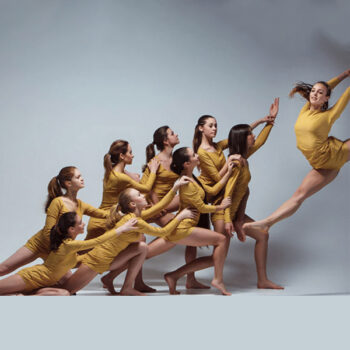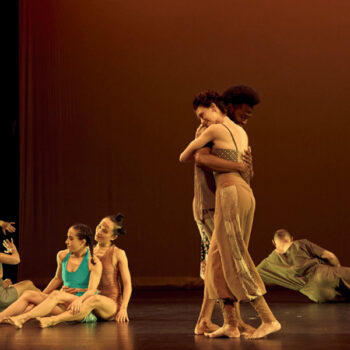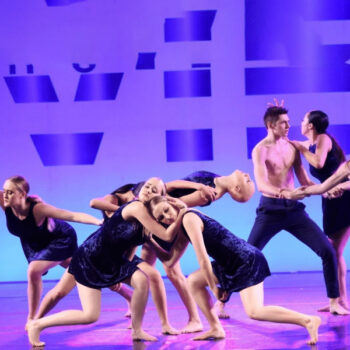What is Lyrical Dance?
Lyrical dancing is a captivating and expressive style that combines elements of ballet, jazz, and contemporary dance. It is a form of dance that beautifully fuses fluid movements with emotional storytelling, creating a mesmerizing experience for both performers and audiences. In this article, we will delve into the essence of lyrical dance, explore different types of lyrical dances, uncover its rich history, and even offer some insights into how to master this enchanting dance form.
What Is the Lyrical Dance Style?
The lyrical dance style is characterized by its emphasis on grace, fluidity, and emotional interpretation of music. It encourages dancers to connect with the music on a deep level and use their movements to convey the lyrics or mood of the song. Lyrical dancers often perform with a sense of vulnerability and authenticity, allowing their bodies to become instruments of expression.
The lyrical dance style is known for its seamless blend of technical precision and emotional storytelling. Dancers in this style strive to create a harmonious flow of movement, where each step, gesture and pose seamlessly transitions into the next. The emphasis on grace and fluidity allows for a smooth and expressive interpretation of the music.
Types of Lyrical Dance Styles
Within the lyrical dance style, various sub-styles showcase different aspects of its artistic range. Here are some popular lyrical dance styles names:
- Contemporary Lyrical Dance: This style combines the fluidity of lyrical dance with the innovative and unpredictable movements of contemporary dance. It often incorporates elements of improvisation and showcases the dancer's versatility.
- Ballet-Based Lyrical Dance: Drawing inspiration from classical ballet, this style incorporates ballet techniques, such as pointed toes and graceful lines, while maintaining the emotional storytelling aspect of lyrical dance.
- Jazz Lyrical Dance: This style infuses the technical aspects of jazz dance, including intricate footwork and sharp movements, with the expressive qualities of lyrical dance. It often features dynamic choreography and syncopated rhythms.
- Modern Lyrical Dance: Modern lyrical dance explores the boundaries of traditional African dance forms by incorporating more experimental movements and abstract concepts. It focuses on individuality and personal interpretation.
How to Dance Lyrical Style?
To perform lyrical dance, it is essential to focus on the following aspects:
- Technique: Develop a strong foundation in ballet and jazz techniques to execute lyrical movements with precision and control with dance teachers.
- Musicality: Connect deeply with the music and allow it to guide your lyrical dance moves, using dynamics and phrasing to enhance your emotional portrayal.
- Body Awareness: Pay attention to your body's lines, extension, and fluidity.
- Emotion: Lyrical dance is all about emotional expression. Learn to connect with your emotions and express them through your movements, conveying the story and mood of the music.
- Practice: Like any other dance form, practice is essential to master lyrical dance style. Take classes, attend workshops, and rehearse consistently to improve your technique and expression.
History of Lyrical Dance
The lyrical dance styles list has an intriguing history that can be traced back to the early 20th century. While the exact origins of the lyrical dance are difficult to pinpoint, it is believed to have emerged as a response to the rigid structures of classical ballet and the expressive freedom of modern dance.
In the 1970s and 1980s, choreographers like Mia Michaels and Wade Robson played significant roles in shaping and popularizing lyrical dance examples. They developed their unique styles, blending elements of ballet, modern dance, and jazz to create the foundations of what we recognize as lyrical dance today.
During this time, lyrical dance choreography began to gain recognition and appreciation as a distinct dance form. It was embraced by ballet dancers and choreographers who were drawn to its ability to convey emotions and tell stories through movement. Lyrical dance competitions and showcases also started to emerge, providing platforms for dancers to display their technical skills and emotional depth.
Over the years, lyrical choreography has continued to evolve and adapt. Choreographers have pushed the boundaries of the style, experimenting with different movement vocabularies and incorporating elements from other dance forms such as hip-hop, contemporary, and even street dance.
Today, lyrical dance remains a popular and influential style in the dance community and on television dance competition shows. It continues to evolve, with choreographers and dancers pushing the boundaries of creativity and self-expression. Lyrical dance is taught in dance studios, performed on professional stages, and showcased in competitions and festivals around the world.
Lyrical Dance Origin
The origin of lyrical dance can be seen as a response to the constraints of traditional ballet and the desire for greater emotional expression in competitive dance. As dancers and choreographers sought to break away from the strict rules and formalities of classical ballet, they began to explore new forms of movement that would allow them to convey emotions more directly.
The lyrical dance draws inspiration from ballet's technique, emphasizing the extension of lines, graceful upper body movements, and the use of turnout. However, it also incorporates elements of modern dance, which emphasizes freedom of movement, expression, and the connection between body and emotion.
Differences Between Lyrical Dance and Other Dance Styles
Lyrical dance stands out as a unique style with its distinct characteristics and qualities. While it shares elements with other dance styles, it has certain features that set it apart. Here are some key differences between lyrical dance and other popular dance styles:
Ballet:
The lyrical dance incorporates ballet techniques and aesthetics, such as pointed toes, graceful lines, and controlled movements. However, unlike classical ballet, lyrical dance places a greater emphasis on emotional storytelling and fluidity of movement. It allows for more freedom of expression and encourages dancers to connect deeply with the music and convey the song lyrics or mood through their movements.
Jazz:
Jazz dance and lyrical dance both have roots in ballet, but they differ in terms of style and intention. Jazz dance is characterized by its energetic, sharp, and syncopated movements, while lyrical dance focuses more on the seamless flow of movement and emotional expression. Lyrical dance often incorporates sustained movements, extensions, and a softer, more expressive quality compared to the dynamic and percussive nature of jazz dance.
Contemporary:
Contemporary dance and lyrical dance share similarities in their fluidity of movement and emphasis on expression. However, contemporary dance often incorporates a wider range of movement vocabulary, including floor work, partnering, and more abstract concepts. Lyrical dance, on the other hand, maintains a stronger connection to music and storytelling, often using recognizable songs and lyrics as inspiration for the choreography.
Despite these differences, it's important to note that dance styles are fluid and constantly evolving. Choreographers and dancers often incorporate elements from different styles to create unique and innovative blends. The lyrical dance itself has evolved, incorporating influences from various dance forms, resulting in a diverse range of lyrical dance styles and interpretations.




